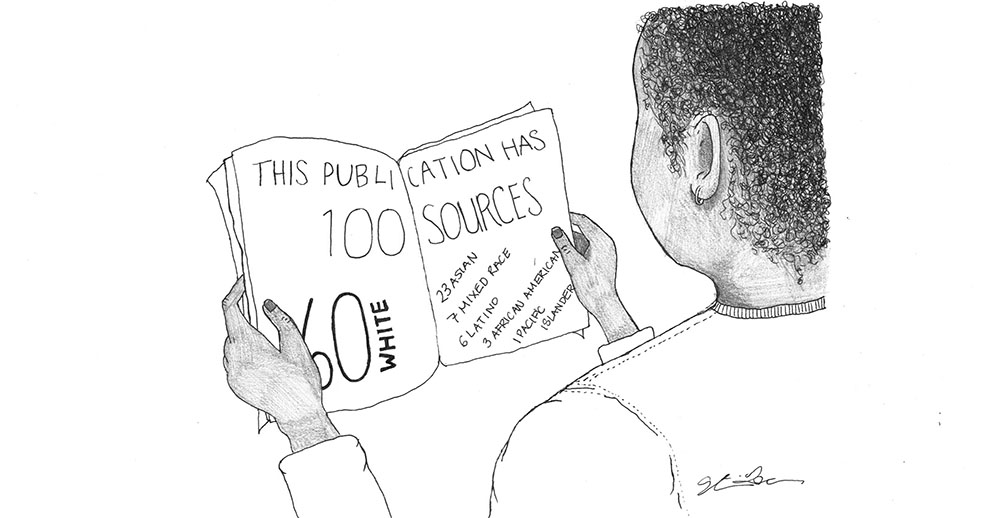Does it matter who our sources are and where they’re from? Does it matter whether we include a range of perspectives from men and women of different races, ethnicities and ages?
We at Verde believe it does.
As journalists dedicated to accurate and authentic reporting, we seek stories and opinions that come from a diverse population. When individuals from different backgrounds are able to share their stories, it personalizes the issues we write about and provides a range of views that contributes to a more educated and understanding community.
 Each semester, the Verde staff self-reports our source information in a publication-wide diversity audit that summarizes the demographics of our sources by race, gender and age. In December of 2017, we did exactly that, and the results (shown to the right) concerned us.
Each semester, the Verde staff self-reports our source information in a publication-wide diversity audit that summarizes the demographics of our sources by race, gender and age. In December of 2017, we did exactly that, and the results (shown to the right) concerned us.
Adults accounted for more than half of Verde’s sources, and though there are several ethnic groups represented, a strong majority are still white. And though underclassmen make up roughly half the student body, they made up only 16 percent of student sources. These results reflect a disheartening lack of diversity, and provide an incentive to seek ways in which Verde can increase the voices being represented.
It is always tempting to turn to our acquaintances for interviews, and though this is simple and easy, it limits the opinions we hear. One way we plan to increase the diversity of our sources is to interview people we normally wouldn’t.
Verde acknowledges that the data collected in our diversity audits are informal, and often, not all sources fit into a single ethnic label; however, audits are still a good starting point for examining our reporting.
Verde also encourages other publications at Paly to begin conducting their own diversity audits. By evaluating the results of these diversity audits, staff members will receive a greater sense of the progress their publications must make.
Diversity within journalism class enrollment is as important as the diversity of sources, and here at Paly it is also limited. The majority of Verde’s staff writers are Asian or white, and to narrow the demographics even more, most are female. Other publications are unbalanced in their own ways, but perhaps none as much as us.
To address this issue, Verde suggests bringing back the journalism workshop that was previously offered to students from East Palo Alto, which was proven to increase minority student enrollment on publications. Another way to increase diversity could be to integrate Beginning Journalism into 9th grade English classes. Lastly, journalism could be incorporated into the AVID Seminar course.
The Verde staff hopes that as a community, individuals will share their opinions about our reporting. As journalists, we must understand the value of listening to a broad range of opinions from sources and within members of the staff, because only then can we accurately report to our community.
We encourage the public to hold us accountable by sharing their opinions. From writing letters to the editors to speaking to a writer directly, we appreciate feedback and will strive to make adjustments to improve our reporting in the future.



